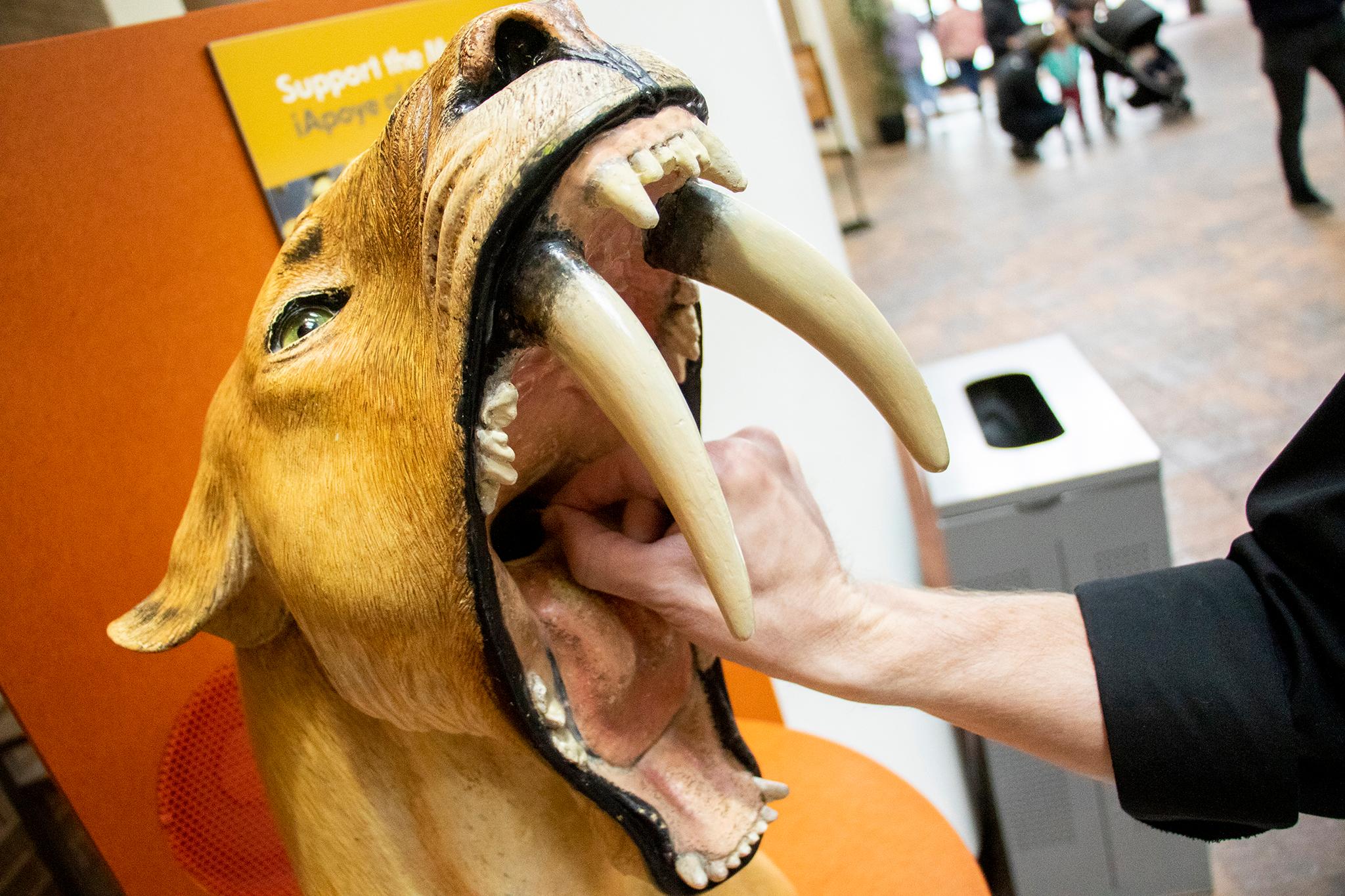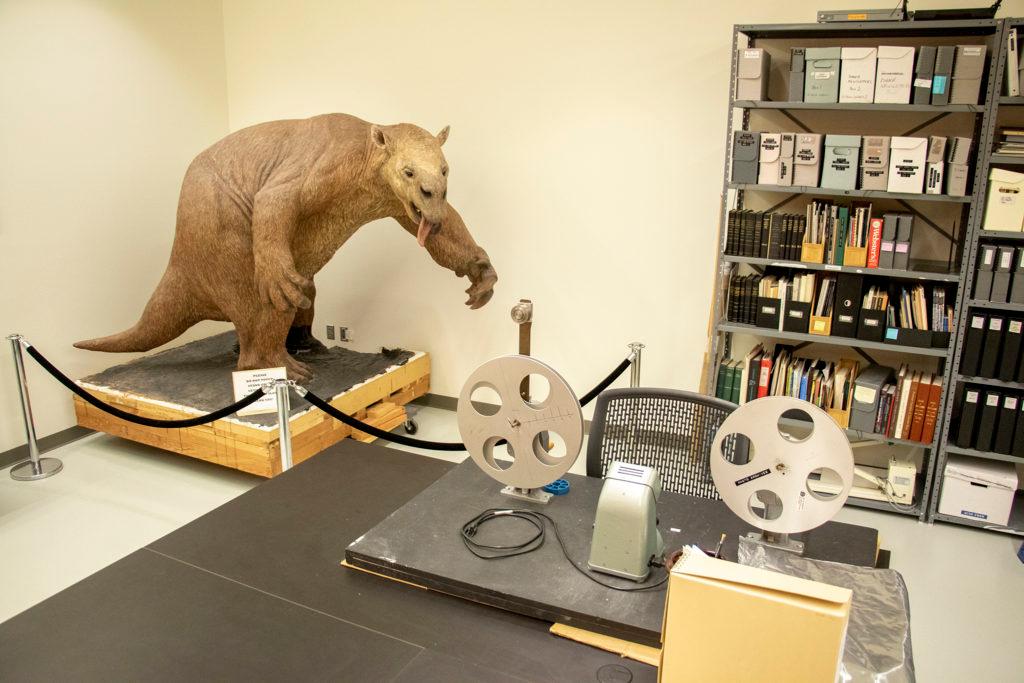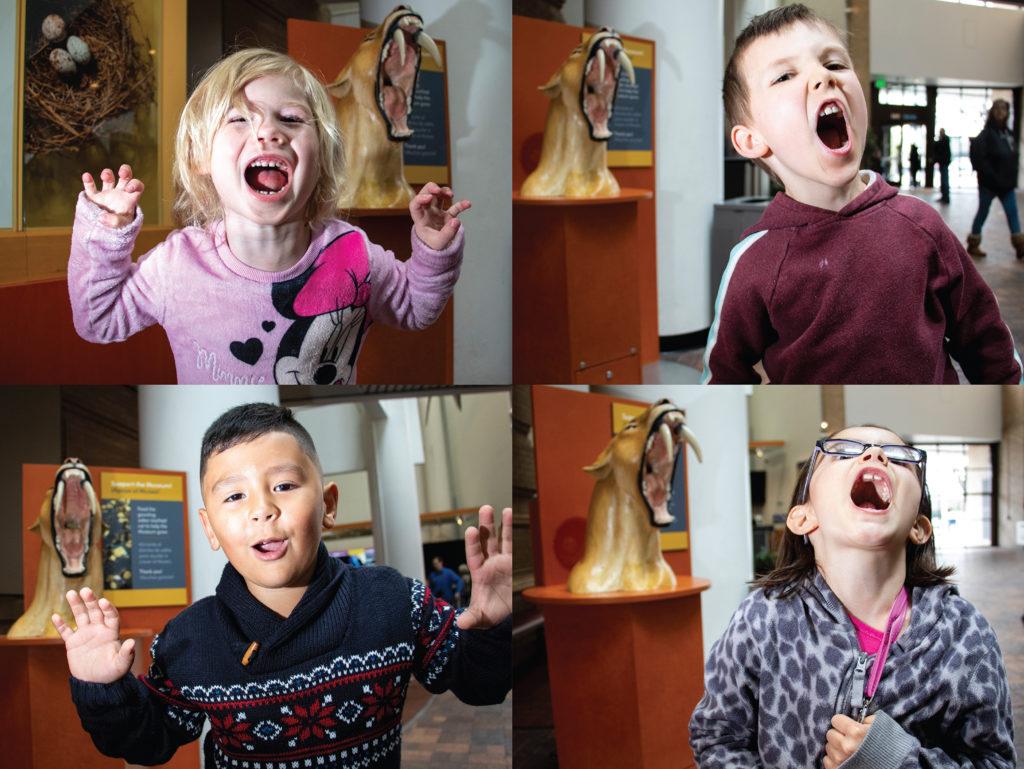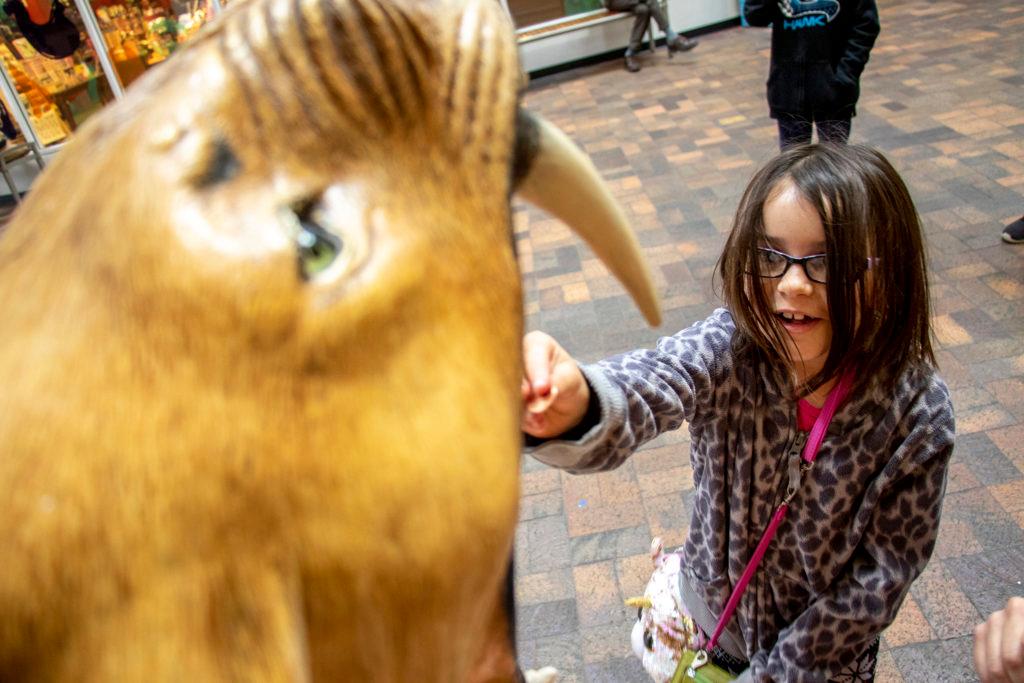
If you’ve been to the Denver Museum of Nature and Science, you’ve probably heard the mighty roar of its saber-toothed cat.
It’s worked the same way for more than four decades: Grab some spare change, reach past its steak-knife-sized fangs and drop the coins down its throat. The cat, situated near a corner of the museum lobby, repays donations with a single, iconic roar that fills the museum’s main entrance.
It now has a larger repertoire.
Jodi Schoemer, director of exhibits and digital media for the museum, affectionately calls the cat Saber. She said it’s long been one of her favorite museum residents. As a kid growing up in Denver, she remembers emptying her piggy bank before visiting the exhibits, just so she could feed Saber his fill of pennies and nickels.
“Even as a youngster… you know it’s not going to bite you, but you still feel that vulnerable human moment,” she said. “You’re sticking your hand in a big cat’s mouth. And that’s fun.”
The appeal translates to real money for the museum. Schoemer said Saber gobbles up about $10,000 a year. But, last fall, she realized that all those donations had taken a toll of their own.
“His tongue was deeply black from all the coins that had passed over it. His left canine was jiggly and loose,” she said. “So we gave him some plastic surgery in his fifth decade.”
The upgrade included some fresh paint and a lower pedestal, so kids and people who use wheelchairs could reach the cat’s mouth.
Schoemer realized the refresh was also a chance for deeper remodel. The museum first installed the cat in 1973, creating the head from a mold intended for an Ice Age scene of two saber-toothed cats attacking a Harlan’s ground sloth. The original exhibit is long gone.

The original roar was also the result of some 1970s museum magic. The staff made the sound with vintage synthesizers from its planetarium, which is why it sounds more sci-fi than prehistoric.
“Technology has evolved since he was first put on the floor,” she said. “And we thought, well, gosh, could we do something with that?”
Schoemer decided not to replace the old roar, but add to it. A computer chip inside the cat now randomly selects from four roars, some of which show up far more often than others.

Five-year-old Will Clark was game to try to discover one of the rarer ones. His dad gave him a handful of spare coins. The first few earned him the classic roar, but eventually, the cat stopped mid-roar and started coughing.
Schoemer calls this sound the “hairball.” Her husband graciously provided the coughing sound effect.
A little bit later, Alaina O’Neal, another five-year-old, approaches with a quarter. “She’s so cute!” she said before dropping the coin down its throat. The cat replied with a diminutive “meow.”
“Awwww,” cried O’Neal.
Schoemer said she installed those two roars as easter eggs.
“Maybe you’ve heard the cat roar zillions of times, but now it does something surprising and unexpected,” she said.
Adding an element of fun was only part of the project, though. Schoemer also wanted to see if she could include a more accurate roar that approximated the sound of an ancient saber-toothed cat, known in scientific circles as a smilodon.
The museum zoology staff led her Dr. Christopher Shaw. The retired vertebrate paleontologist is a smilodon expert who worked with La Brea Tar Pits in Los Angeles. He had in fact researched the museum's question: Could saber-toothed cats roar? And if so, what in the world did they sound like?
Some cats roar while others only purr. By examining the fossil record, Shaw found smilodon throats more closely resembled moderns roaring cats, like lions and leopards, than purring cats, like house cats. That led him to conclude that saber-toothed cats likely could roar.

Still, Shaw didn’t want the museum to get too hung up on scientific accuracy. He had been to the Denver Museum of Nature and Science and admired Saber for his mighty, synthesized roar.
“For me, it was the size of the roar that was really impressive and not the quality or character of the roar itself,” he said.
The museum ended up adding an amalgam of a lion’s and tiger’s roar. It’s more than enough for a good thrill.
Schoemer knows it’s probably not anything like an actual saber-tooth cat roar, but how could it be? Smilodons have been extinct for thousands of years. The new roar is a best guess, which is true of every recreation of the ancient past at the museum.
“Science goes a long way and then imagination takes us the rest of the way,” she said.
In other words, Saber’s new roar is just its latest impression of a real saber-tooth. With luck, it might inspire a young scientist to figure out an even better one in another 46 years.








